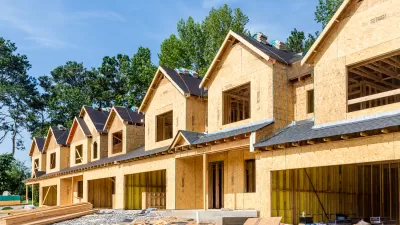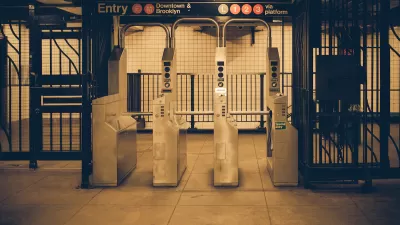It took an effort that was both well-planned and ad-hoc to save NYC's backbone from Hurricane Sandy, and have the city's transit system back up and running again soon after the storm. Robert Sullivan examines that effort and what happens next time.
"The subway is the Mississippi River of personal commerce in New York, for people who work in Midtown, Dumbo, Wall Street. For three days after Sandy hit, it was stopped dead, and for another two days after that, only part of it was running. The closure proved once again that New York does not function without its subway."
"When you look closely at it now, a year later, in the midst of another Atlantic hurricane season, you see all the ways in which the Metropolitan Transportation Authority and New York City Transit failed and triumphed," writes Sullivan. "And you see what it will take to keep the system going: technological improvements, yes, but also the oldest technology of all — the knowledge of the people who run the subway, many of whom have been there for their entire working lives."
"This year, should a Sandy-like storm show up, it won’t encounter a transportation system that has changed conspicuously," he adds. "But the thinking of the people running it has. As one senior official puts it, 'We definitely had tremendous lessons learned.'”
FULL STORY: Could New York City Subways Survive Another Hurricane?

Pennsylvania Mall Conversion Bill Passes House
If passed, the bill would promote the adaptive reuse of defunct commercial buildings.

Planning for Accessibility: Proximity is More Important than Mobility
Accessibility-based planning minimizes the distance that people must travel to reach desired services and activities. Measured this way, increased density can provide more total benefits than increased speeds.

Fair Housing Cannot Take a Back Seat to ‘Build, Baby, Build’
If we overlook fair housing principles in the plan to build US housing back better, we risk ending up right back where we started.

LA Metro Board Approves New 710 Freeway Plan
The newest plan for the 710 corridor claims it will not displace any residents.

Austin’s Proposed EV Charging Rules Regulate Station Locations, Size
City planners say the new rules would ensure an efficient distribution of charging infrastructure across the city and prevent an overconcentration in residential areas.

Making California State Parks More Climate-Resilient
A recently released report offers recommendations for keeping state parks healthy and robust, including acquiring additional land for conservation and recreation.
City of Costa Mesa
Licking County
Barrett Planning Group LLC
HUD's Office of Policy Development and Research
Mpact Transit + Community
HUD's Office of Policy Development and Research
Tufts University, Department of Urban and Environmental Policy & Planning
City of Universal City TX
ULI Northwest Arkansas
Urban Design for Planners 1: Software Tools
This six-course series explores essential urban design concepts using open source software and equips planners with the tools they need to participate fully in the urban design process.
Planning for Universal Design
Learn the tools for implementing Universal Design in planning regulations.

























